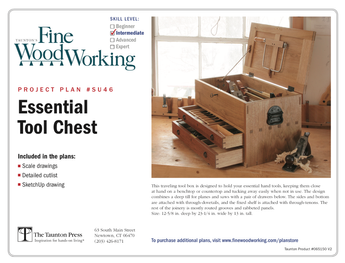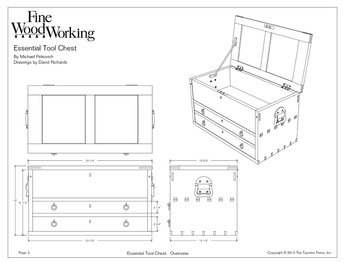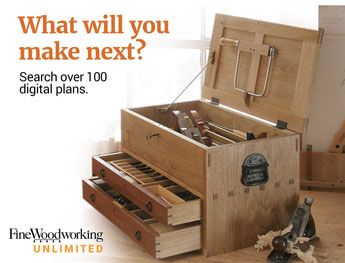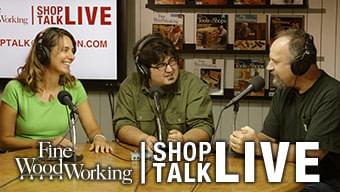A year of spoon, bowl, shrink pot and kuksa carving has got me interested in extending my carving skills to a wider subject-matter, specifically: relief carving (rather than carving in the round). I’ve been devouring vids and books on the necessary tools, their maintenance and the techniques for using them. All I need now is the experience (inclusive of the 100 mistakes).
I do have various green woodworking knives and gouges but few of them are suitable for relief carving.
The set-up (shaping) and sharpening of carving tools is rather more complicated than it is for the nice rectilinear blades used in cabinet making tools. I feel the need to practice on tools-that-don’t-matter, to make the mistakes on them before acquiring and setting up good quality carving chisels.
I have (and can make) the necessary equipment – A Sorby ProEdge belt grinder for shaping and initial sharpening; buffing & polishing wheels; various slips made from shaped wood coated with fine-grit pastes or 3M papers.
Can anyone recommend a brand of inexpensive carving chisels from Amazon or similar that’ll cost no more then, say, £/$50 for a set of six, inclusive of gouges, V-tools and chisels (straight & skew)? There are plenty that come up in an Amazon search but most seem to consist of strange chisel shapes that are not much like those of true carving chisels.
As I live in the UK, any suggestion would have to be available there rather than from overseas. The postage from, for instance, the USA to Britain is a silly amount of money; and then there’s the customs, sales tax and carrier charges for the bureaucracy of applying them.















Replies
Why not start with the good vintage gouges available on the bay and other sites in the UK Once they are set up and sharp one has a good tool at the cost of new crap. Among my mixed tools I have several British makers, Herring, Sorby, James Cam. All are good steel and most only needed a good honing before being fit for use. My opinion, others may vary.
I agree with 3steers. There has to be a decent market in England for vintage good quality carving tools. I'm in the US and I prize mine, as they are as good as any that I bought new. I think you are too worried about "ruining" a good tool by practicing sharpening on it. You won't likely use up more than a 1/32" of its length before you get the hang of it. Some will come with decent sharpening profiles that you can use directly or just refine; others will need some reshaping. I think what you will find is that some will seem to work better than others; explore the small differences in sharpening that make those differences.
A long ago FWW article explained that for the gouges with a deep U shape, the actual edge needs to move outward as you go up the U, for the gouge to be able to cut deeply. I.e., more metal removed on the inside of the U as you move away from the bottom. I haven't seen this detail in any other source.
Also note that buying new carving tools, esp. cheap ones, doesn't guarantee that they will come with anything like proper sharpening profile to copy. Even some of the new expensive ones we bought were very crudely shaped. We didn't bother buying any more of them! Our favorite brand when buying new turned out to be the "Swiss Made" that Woodcraft sells here in the US.
I've attached a couple pictures for inspiration.
The notion of buying ebay or other older chisels to practice the reshaping/sharpening on seems a very good idea. "Why didn't I think of that?" :-)
The advice that I'll be following will be that imparted by Chris Pye in both his books and in his recently-released (free, to You Tube) carving videos formerly part of his commercially-sold instruction set. (Perhaps he's retired?) I find his explanations clear, precise, comprehensive and unambiguous.
Some snippets from this Pye advice:
Main bevel of 15 - 20 degrees, flat (no micro bevels) from (a slightly smoothed) heel to edge, with an inner bevel of some 5-10 degrees, depending on the work and the wood to be carved. Aim to remove the "line of light" reflected from any edge not truly sharp.
U-gouges - sharpen with a flat edge but consider giving these and perhaps V-tools some "wings", which are the vertical U-gouge sections shaped to point forward of the U-part of the edge (or the V-tool chisel edges to point forward of the very slightly rounded V part of the edge. The objective, as you suggest, is to have these "wings" enter the wood ahead of the bottom part of the edge for the purpose of giving a more slicing and hence cleaner cut on the side that may be cutting against the grain in any cut that's going obliquely to the grain direction.
***********
I can probably manage the sharpening and honing aspects well enough, since I've sharpened and honed cabinet-making tools for years. Its the (re) shaping of the working end of awkward profiles such as gouges and V-tools that I feel a need to practice on. According to Mr Pye, even well-sharpened carving chisels come from the manufacturer with bevels that are often too steep and also lack the small inside bevel; and definitely no wings!
Thanks for you advice. Ebay here I come.
two things:
1) I wouldn't get cheap carving tools unless you have some inside knowledge about them being good steel. of all of the tools you'll use, carving tools lacking in fineness or hardness -maybe the worst place to skimp. Cheap tools often also have fat or bulky (can border on unusable) profiles.
2) you typically won't need much power anything to use carving tools. The tool bevels aren't that thick and it's probably better to maintain them by hand at first to understand the profiles.
We are captive in the US to woodcraft having pfeil. Pfeil are the nicest new carving tools in my opinion, and they are probably more expensive here than they are anywhere else, and you used to be able to get them from overseas to go around that but last I saw, any such thing has been shut down.
Carving can mean a lot of things - you could find old tools that suit your needs, or if you are taking classes and the instructors tell you to get something, you could end up getting five gouges and not use most of them regularly going forward, and need to get three more for the net project.
it's not uncommon to find henry taylor or other kind of later less refined carving tools on ebay for $20 each - hard to give you a specific suggestion but to say I don't have many cheap carving tools that are crude that I can stand. But I could get along for everything I've made with rehandled harbor freight bench chisels.
The only purpose of getting a cheap tool would be to practice reshaping and sharpening on more complex edge profiles than the typically straight edges I'm familiar with for cabinet-making WW. There seems to be a lot more to carving tool edge profiles so practice on something other than a new £/$40+ item seemed a wise move. I don't want to immediately blue an edge or end up with a new chisel half its length as I grind one mistake after another away. :-)
But, as other posters have suggested, a good older tool (gouge or V-tool) from ebay is perhaps the best item to practice on. After having a look, the great majority of those with reputedly good steel or brand are already well-worn and often have badly shaped and sharpened working ends. I could spend £/$5-10 and might even end up with a decent, if shorter, tool after I fettle my fettling techniques.
*****
As I have with green woodworking tools, I will be buying carving tools only as a carving project I take up requires them. I'm going to begin with some of the Chris Pye relief-carving projects now available in his (free) YouTube vids - a dog head profile, three ear-sharing hares in a circle and a holly leaf. Happily Mr P suggests the appropriate gouges or chisels for each aspect of the task.
The gouge brands I've bought for green woodworking (Ashley Iles, Hans Karlsson, one Beavercraft) all have their merits, with Ashley Iles seeming to be the best bang-for-buck in that they're very well made of good steel with a lifetime guarantee and a range of 2000 carving tools to choose from. Made in Lincolnshire, UK so no outlandish customs duties or postage fees. I'll probably make the Iles my go-to when any carving task suggests a particular new tool I haven't got.
**********
All the green woodworking gouges I've so far bought and used have come already shaped and sharpened - even honed. I've only had to keep them honed (and sharpened one) in a whole year of green woodworking, producing 50-odd spoons & such, five bowls of various sizes, four shrink pots and various this&thats. But green wood is kind to edges. Relief carving in oak may be another matter!
So I think I do need to skill-up on reshaping as well as sharpening and honing complex carving tool edges. Happily, the Chris Pye videos and books on such matters are extensive, comprehensive, exhaustive and very well presented.
Apologies if my reply seemed to be aimed at you. I intended it to be directed toward the op.
The Best bang for the buck now for woodworking knives and chisels seems to come from Ukraine, and you get to keep them as they are likely to be well made from good steel and good manufacturing practices: https://beavercrafttools.com/
Beavercraft supplied my first green wood working knives for making spoons, spatulas and similar items. They're close (but not quite up) to Flexcut in quality and performance for half or even quarter of the price of similar Flexcut items ..... in the UK. They do need more frequent honing than all my other-brand green woodworking tools.
Beavercraft aren't really oriented at traditional and more complex Western European carving styles, though. Their gouge and chisel ranges are very limited and seem to be intended mostly for sloyd work and for the making of small scale rather simple cartoon-carvings, going by their various carving-project wares and associated videos.
I have a few Flexcut knives and mini-gouges too. Pricey in the UK compared to US prices but worth it for some very small gouges; and their penknife-style multi tools are very good indeed for taking out to do some casual spoon carving half way around a long dog walk in the woods.
Ukraine seems to have a number of small manufacturers making what seem to be primarily sloyd-style tools, not unlike the Swedes. (Axes, adzes, large gouges, carving knives and so forth). Some are well upmarket from Beavercraft, with steeper prices. I haven't bought any (they have no UK importer so customs, VAT and carrier charges can become a wallet-raiding addition to the tool price) but they look to be high quality and seem to get good reviews, largely in the USA.
But for traditional Western style carving tools, why would a Blighter go somewhere other than Ashley Iles, a very good current UK maker with a vast range of such tools made to a high standard? :-)
Flexcut sets are worth a look.
Not sure if in your price range, but they are really nice items.
Also very compact as you swap the handles over on the blades.
They were recommended by the centre for fine woodworking in Nelson NZ when I went there for a course, and I did not regret the purchase.
I also have a few old gouges inherited from my grandfather to compare - these were a total pain to get sharp, as gouges really do need to be razors, but perform well enough. The flexcut are probably marginally better due to the flexible shafts, but I'm anything but an expert carver - just off the beginner level myself.
There's a few Flexcut items in my green woodworking tool box. They do come well-sharp and stay that way a long time. I really like their penknife style multi-blade tools. They also hone well and easily. I don't have any of their gouges/chisels meant to be malleted, though. The non-mallet items are too bendy and small to be anything other than hand-operated.
Flexcut are very good for smaller stuff like spoons or mini-bowls - not so good for large bowls or shrink pot hollowing-out. I might use them to have a go at woodcut or lino prints. I'm not all that attracted to the whittling stuff that many seem to focus on in carving and for which Flexcut tools seem mostly oriented.
I did think of trying a Flexcut mallet tool - but they're expensive in the UK and more traditional items like Pfeil or Ashley Iles seem to be rather more substantial; and reconfigurable. Flexcut blade configurations are very thin and not likely to be amenable to any significant reshaping.
***********
The Western carving traditions of the older kind seem to include the "commissioning" of the tools - (re)shaping the business end to suit different carving tasks, at different scales and in different species of wood. I think Pfeil still come with a standard bevel ground on them but not fully sharp and definitely not honed. Same for Auriou gouges.
Ashley Iles do come sharpened and honed but all at the same standard bevel angle, which is said by various carvers to be too steep for many tasks/timbers, especially the oft-used lime/basswood. (They're fine for green woodworking, which doesn't care that much about the bevel angle; and can be malleted).
I and my finger disagree with you on the Auriou gouges. (Keep all parts of both hands behind the cutting edge of the gouge at all times.) I have three Auriou fishtail gouges designed with Chris Pye, I believe. They were fully sharp and honed as received. The 3 sweeps from Auriou are flatter than the same sweep from Pfeil and the older English makers however.
Based on the one Ashley Iles I have, a 20mm about 5 sweep, I find the whole gouge to be thick, heavy and clunky, not just the bevel. More suited to heavier work than any I have tried.
My opinion, others may vary.
Hi 3,
I've not had a fondle of an Auriou gouge myself but I was going from the Chris Pye blurb about them, in which he suggests that they will require "commissioning" (i.e. shaping, sharpening and honing) before use. But perhaps Auriou have now followed other manufacturers in supplying ready-to-use edges to suit we novice gouge fettlers?
Ashley Iles do have another lighter and thinner range besides their standard carving chisels - the Zoe Gertner range of 37 carving chisel types. (page 17 of their catalogue). The handle sizes of the standard range do vary .... but not with every blade-width increase or decrease.
I have some 40mm wide Iles gouges for green wood bowl making that are "thick, heavy and clunky" but also some < 20mm wide bent gouges that are scaled down in their parts from those monsters. Personally I don't find either of them too big, for either malleting or hand-pushing - but I am yam a big strong lad, me. :-)
“[Deleted]”
Woodcarving is a very diverse craft, and the styles and sizes of tools required differ depending upon which type of carving you plan to do - caricatures, shallow relief, deep relief, flat plane, chip carving, carving in the round, etc. I think that full-sized tools are the way to go if you truly want to someday do relief carving - IMO, Flexcut tools are only good for those who want to carve caricatures and other small "crafty" items. Go to a woodcarving forum and see what others recommend for the type of carving you think you want to do.
I agree with the idea that you won't use up or destroy a carving tool while learning to reshape and sharpen it. Best to get the ones you will use for the rest of your life and not waste money on "sharpening practice" tools.
As for sharpening, I learned from a class with Alexander Grabovetskiy (Google him if you don't know who he is - he is perhaps the world's most accomplished contemporary carver) just how foolproof and fast his method of reshaping and sharpening tools is. He uses a WorkSharp (but not in the manner you would use it for sharpening plane blades and chisels) in combination with a Tormek accessory that happens to fit the WorkSharp perfectly. No need for any other type of sharpening equipment, this works perfectly for all shapes and sizes of carving tools (from smaller Euro-size tools to my huge sculptor's tools).
I used to have a Tormek but sold it as it was far too slow as a grinder/(re)shaper and the various gubbins to sharpen different things cost a small fortune each. I now use a Sorby ProEdge belt grinder with various inexpensive belts from 60 grit to 3000 grit. The ProEdge also has a take-off shaft on which to mount various small wheels for buffing and honing. Various inexpensive gubbins can be used to support various kinds of tools. It's also very easy to make one's own tool holders to fit in the variable angle tool support platform via a rectangular groove.
I accept what you say about just getting the carving tools I feel are of a quality and type that I'll use for whatever carving style I take up - of a quality that will last. I admit to being slightly wary of the added complexity of gouge and V-tool shaping and sharpening compared to edge tool blades that are straight and easy but ..... I don't suppose I'd utterly ruin a carving chisel even if I make an error or two, so .....
********
I have a tranche of spoons and bowls to finish at the moment but as soon as they are I'm going to attempt a Chris Pye relief carving, probably one of these:
https://www.youtube.com/playlist?list=PL1nsSllkgfs_m0AjHnPvC3QYUsqWfNYq4
https://www.youtube.com/playlist?list=PL1nsSllkgfs8s1aWkMJNdp0Ek9ubsmQNH
Mr Pye indicates in the vids which tools to use for the various purposes, so I'll probably buy the Ashley Iles versions. Mr P also provides a lot of vids on how to shape, sharpen and hone such tools. But I'll have a look at the Grabovetskiy stuff you recommend also.
Grabovetskiy has an online school, but from what I saw a while ago, his projects are definitely not for a beginner. It's inspiring to see what he does though, it gives you something to shoot for. He was named the International Woodcarver of the Year in 2012. His background story is almost as amazing as his carving; Amnesty International was able to get him released from a Russian prison where he was jailed at age 19 for his religious beliefs and refusal to enter the Red Army. He emigrated with his wife and small child to the US, where he now works out of his home in the Gold Coast ($$$$) district of Florida, where people can afford to hire him. When I took the class from him, he showed slides one evening of the cement block "apartment building" and the neighborhood he grew up in before he was jailed - no indoor plumbing, life seemed pretty grim.
One of Chris Pye's books describes in great detail (I think a whole chapter IIRC) exactly how to sharpen a V-tool, which is the hardest tool to sharpen. I used this info when I first started carving and found it indispensible.
The WorkSharp system is a rotary-based dry system using glass discs with various grits of replaceable abrasive paper stuck to them. Using the guide bar located above the rotating disc with a simple Tormek tool clamping fixture ($34 on Amazon) you can set the angle you want, and it is locked in throughout the sharpening process. It's surprisingly quick to reshape and sharpen, pretty much foolproof, and I don't think it's very easy to overheat a tool either. In the weeklong class I took, one of the students showed up with a set of Pfeil tools all brand new in their packages (he had no carving experience whatsoever), and using the above system was able to commission all of his tools rather quickly, regrinding them to a lower angle and sharpening them to a mirror polish. The only other thing you need are some slipstones to polish the inside edges, but this is something you need no matter how you sharpen.
I had a look at one of Grab's free YouTube vids, on sharpening a U-gouge with the Worksharp machine and a Tormek holder. The video was nearly an hour long, inclusive of a long ramble by Grab before he demonstrated his Worksharp technique. I have to say that I prefer the Pye style of instructional videos, which stick to the point ('scuse pun). :-) No criticism of Grab's work or technique but I have little interest in the oblique ramblings.
Mind, he does (sort of) explain why he likes Ashley Iles tools, which is reassuring as that's what I'll buy.
The Worksharp machine shown doesn't appear to be available in the UK. In fact, Grab mentions that it isn't for sale in Europe. They seem to sell only knife sharpening mini-belt machines in the UK. The Sorby ProEdge sharpener I already have will have to do.
*********
I wonder if its just a cultural thing, my preference for video presentation styles like that of David Charlesworth and Chris Pye over those presentational modes more current in YouTube videos on woodworking? I find most of the popular presenters far too inclined to prattle irrelevance around the core of the supposed subject of how to do this or that. The Pye style is so much "cleaner", concentrating on the subject not the presenter's personality; short but information-dense, unambiguous and comprehensive.
There's a series of 9 short Pye videos on sharpening a brick-blunted V-tool that break the process down into discrete operations, each of which is absolutely clear and contains the explanation of why as well as how.
https://www.youtube.com/playlist?list=PL1nsSllkgfs8VeLyYemSYb4LHnd9WTAmh
I watched three other famous woodworker presentations on V-tool sharpening and none of them were anywhere near as informative, comprehensive or clear as the Pye presentation.
I get the impression that many YouTube presenters are just getting up and delivering their stuff ad hoc, with no script, production plan or other governance of the content. Personally I think they should all have a look at FWW how-to videos to see how its done as these, like the Pye and Charlesworth presentations, seem an excellent benchmark of clarity and scope, not to mention a dialling down of the presenter personality and lookatme antics.
But I suppose its all a matter of taste. Some like to be entertained by a personality as they're informed perhaps?
Don't confuse typical YouTube videos with those of accomplished carvers who offer subscription instruction. IMO most YouTubers are either trying to sell something or have a huge ego. Oftentimes they aren't even very good at what they demonstrate.
We've had this discussion before (about a week or two ago) in another post; I still think that Mary May, for example, does an excellent job for beginners like yourself. Her approach is to show you everything she does (you can always fast forward if you like), with the camera rolling the entire time. It gives you a valuable insight into how fast one should work, how to approach the carving process, what to do in tricky situations that arise, etc. She narrates the entire time, explaining what she is doing and what tool she is using. It was beneficial to me when I was starting out in woodcarving. Just knowing how long it took her to do a project helped me to gauge my own progress.
IMO, books are still an important tool in the learning process - by their very nature, they are much better vetted than any video or magazine article - better organization (table of contents, index, etc.), fewer mistakes that slip by, fewer omissions, etc. They also cover much more subject matter, and can easily be used as a reference source, unlike video.
I think woodcarving video in particular is very beneficial as well. I don't think that video is a good tool for relatively straightforward projects - in those cases, a book with drawings, bill of materials, etc. is better.
However, I really dislike the currently-popular printed magazine format in which only the highlights of a project are covered (as in a typical magazine article with 12-15 photos and one sentence captions for each, with little or no additional text beyond a basic repeat of the captions). If you compare older issues of FWW with any issue of the current magazine, you'll immediately see what I mean. It's certainly an easier way out, and with the current state of magazine publishing, it's maybe the only way to make a go of it.
I've recently had two woodcarving articles published in two different magazines, and even though it was fun to do, the limitations of the current printed magazine format in presenting information were pretty obvious.
The preferences we all have for various forms of teaching and other information presentations vary a lot. Like you, perhaps, I've always found books and other pic & word presentations far easier to use successfully as a source of how-to and an entry to acquiring my own skills via following that form of advice.
Is it genetic or cultural? I often think its the latter as my schooldays were very much a matter of book larnin'. A visual lesson (film projector, in those days) was a rare and novel thing. Their quality was often dire, in the 1950s and 60s. Books also tend to give the underlying why whilst many videos often confine themselves to only the how.
I like the Chris Pye books very much as a starter into carving. Everything is explained clearly and comprehensively, in a logical order and with lots of why to go with the how. His videos too stick to the point and are information-dense yet very logical in how its all organised and imparted.
I don't dismiss longer videos of someone actually doing a piece of work, especially if they're expert (as with Mary May) .... although I tend to prefer those when I already have some understanding; and without any commentary, music or other aural irrelevance. In many cases, the prattling-on is a distraction from the process that can be clearly seen in the visuals alone. I quite like some ASMR vids in which the only sounds are those of the tools being applied to the work.
When I know nowt much about the subject (as currently, with carving) I want written or verbal information to explain what's going on - but only that and no asides about the life and orthogonal opinions of the presenter.
Pye, Charlesworth and just about every FWW video presenter are the video-learning benchmark for me. As I mentioned, I believe the difference is a behind-the scenes script, director and producer that (as with a good book) edit and arrange the whole to properly serve the purpose of imparting only relevant information in a clear fashion, without spurious distractions.
Video instructions shouldn't be "entertainment" of "fun" no matter that everyone these days seems to think that they should. I want to learn and understand, not to "have fun" chuckling along with the presenter-comedian gurning and throwing out clever remarks.
*******
As to magazines - I gave up on nearly all of them years ago, as they tend to become nothing more than containers for adverts-in-disguise. Although FWW contains plenty of ads, the articles still seem very well done and useful to me. They lack the depth of a book, as you say (and perhaps also the depth of early FWW issues) but they do provide a lot of inspirational projects illustrative of things-different from one's usual productions. FWW magazine has been my main teacher and a source of endless adventures down all sorts of cabinetmaking avenues.
Nice to see so much information presented on this topic. A bit more:
I have a couple of tools I use for carving that I have modified either to fulfill a different purpose than original, or to make an "extra" chisel into a carving tool.
The first gouge I've uploaded is a #3 or #4 that has the tip curved to be convex, rather than straight across or even concave a bit. It is useful for flattening a background when the raised area is curved concavely. It is also useful for making a clean cut when completing the inside corner where two coves (made by a router or by hand) intersect. This one came to me as it now is; I didn't modify it. It is marked "T. H. Witherby".
The second chisel is a non-symmetrical skew that I made from a small straight chisel (I already had a #1 carving tool of the same size that I liked for that use.) So I ground this into a skew. The new Pfeil skew I bought was symmetrical; I purposely ground this one asymmetrical with two differend angles similar to a carving gouge.
The third picture is of a chisel with a very different grind, that I came up with myself (can't claim to have invented it.) It is a curved skew shape, symmetrical in that each side is ground the same angle. It is very useful for finish leveling of backgrounds, as when the handle is tilted up to engage the cutting edge, the cutting edge is slightly curved. It is like a #3 gouge, but even less curve. However, the corners stay out of the wood when taking very light cuts. So it's like a free gouge if you have an old, moderately wide chisel. Even one with surface rust or shallow pits can be used, as the edge is in the middle of the steel. Of course, don't try this one with any of the old style chisels that have tool steel laminated to softer body steel.
One of the important facts that the typical education system seems to ignore is that people learn in very different ways. Some by reading, some by hearing, some by being shown, some by having you move their body correctly for a couple of times (yes, I've done this when helping novices learn how to turn on a lathe.) Mix in with that the random quality of the YouTube video, and you can waste a lot of your time. I almost never listen to podcasts, I guess because I am fortunate not to sit in a car for long periods of time every day in a commute to work (I have a 400 foot walk thru the woods.) And when I am in the shop, my old brain needs quiet to concentrate on what I'm doing.
Last thing: I am a big fan of FWW. I was fortunate to see a copy of issue #1, and immediately subscribed (a charter subscriber.) It was my window into the world of high quality woodworking; I lived in remote southern Tennessee long before the Internet existed.
Enough for tonight...
Fascinating stuff!
Mr Weaver of hereabouts goes further and makes his own chisels (perhaps also gouges or even a V-tool). I also read in the Pye man's book that he too reconfigures various carving chisels in the way that you do, to serve arcane and esoteric purposes that arise. His book contains info showing not just how to reshape but also to refurbish and even to remake (involving hot flames and quenching which, I admit, frightens me a bit).
In sculling about various on-line shops that sell carving things, I notice one or three makers coming up with novel tools not unlike your own. The production of many of them seems to have been stimulated by a carver describing their needs and the manufacturer (often the smaller manufacturers) responding with a novel product. Perhaps you should e-mail that Ashley Iles? :-)
Old thread, spam revival.